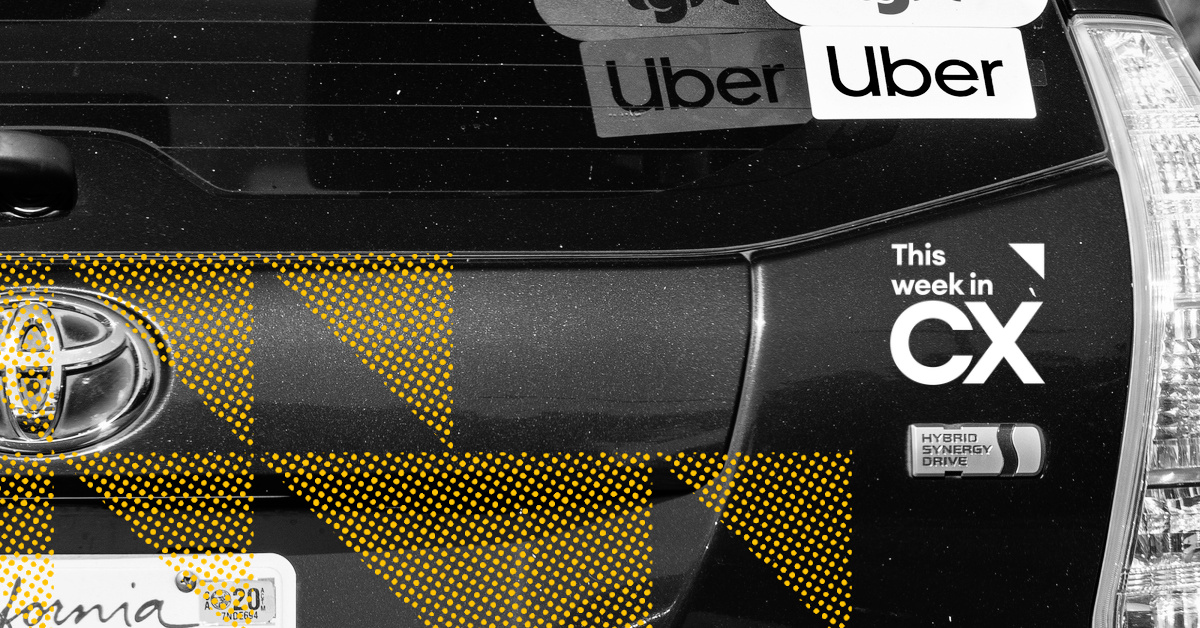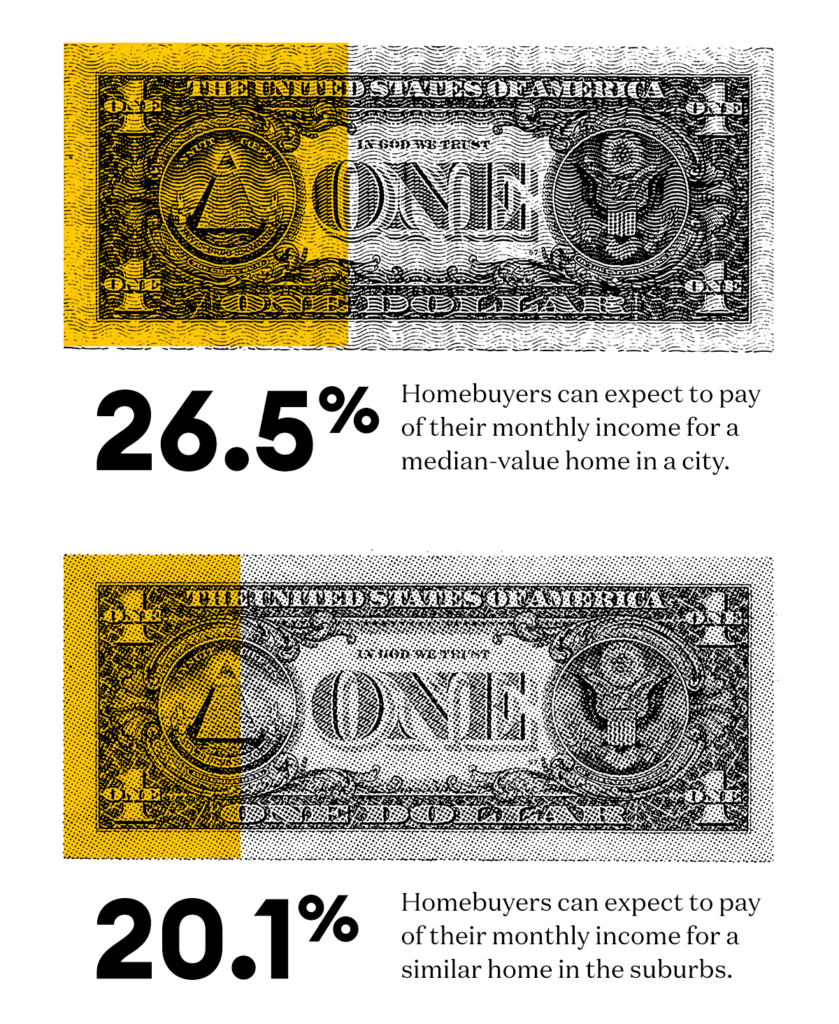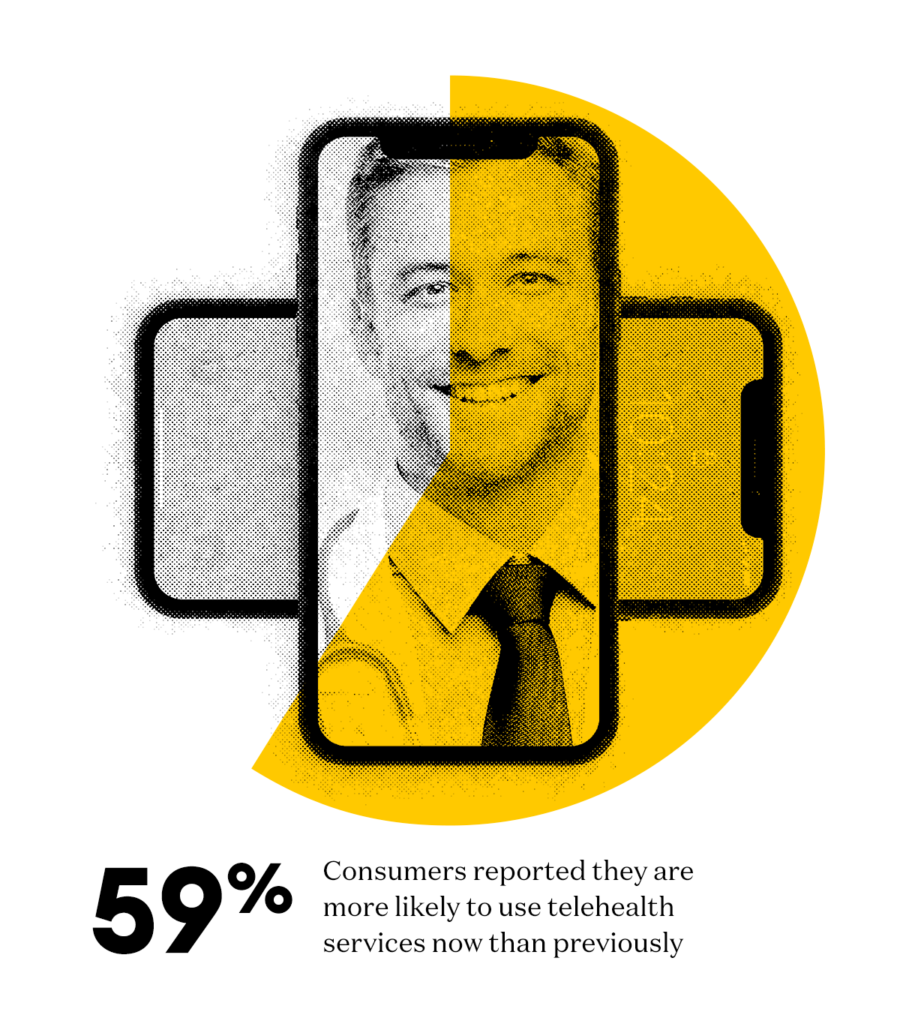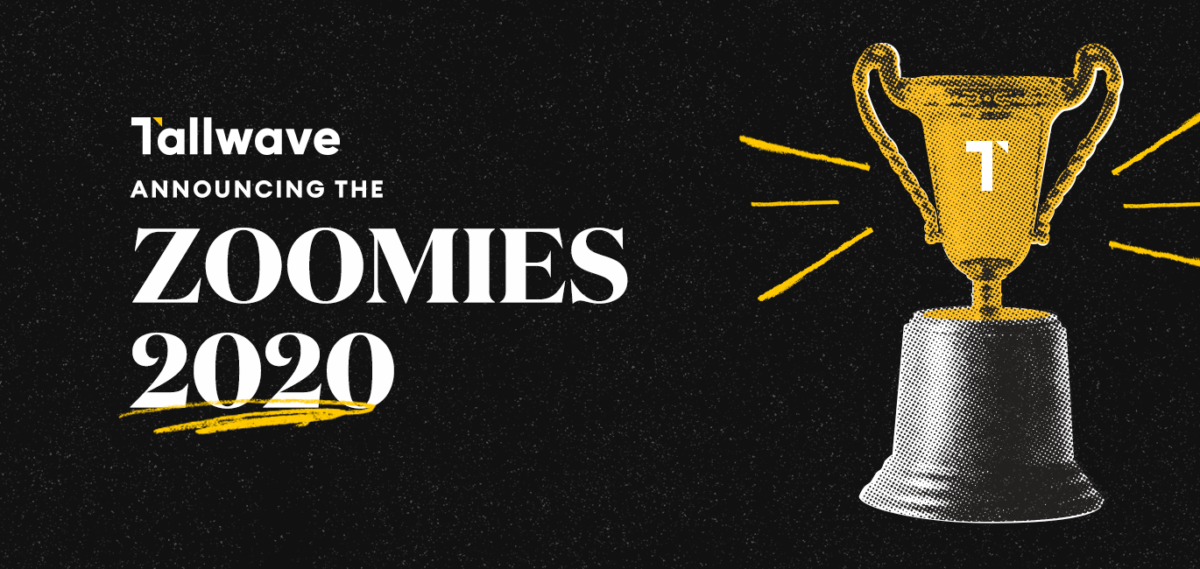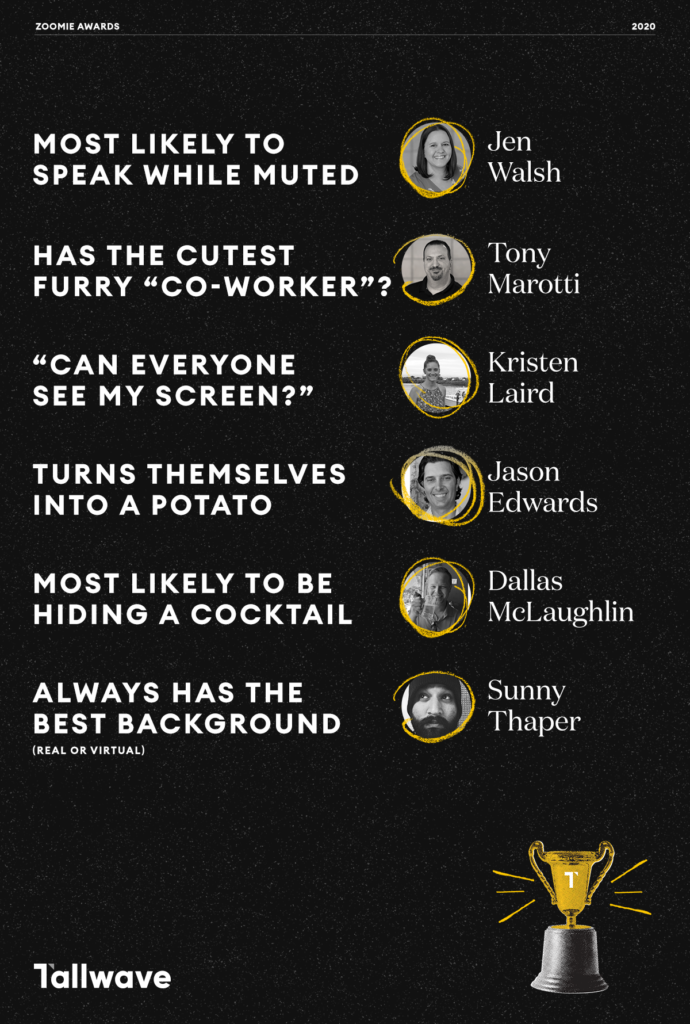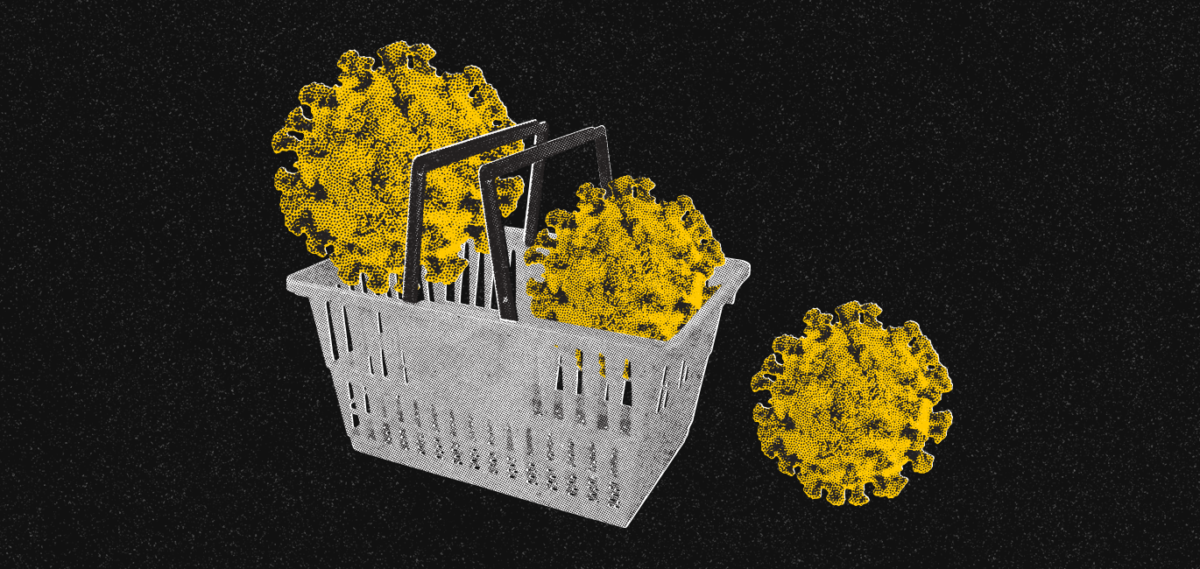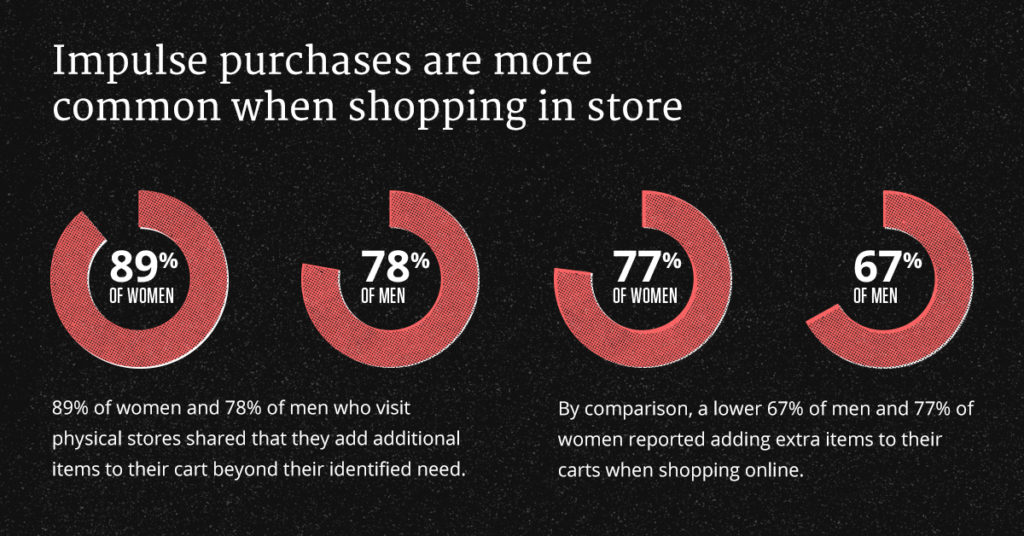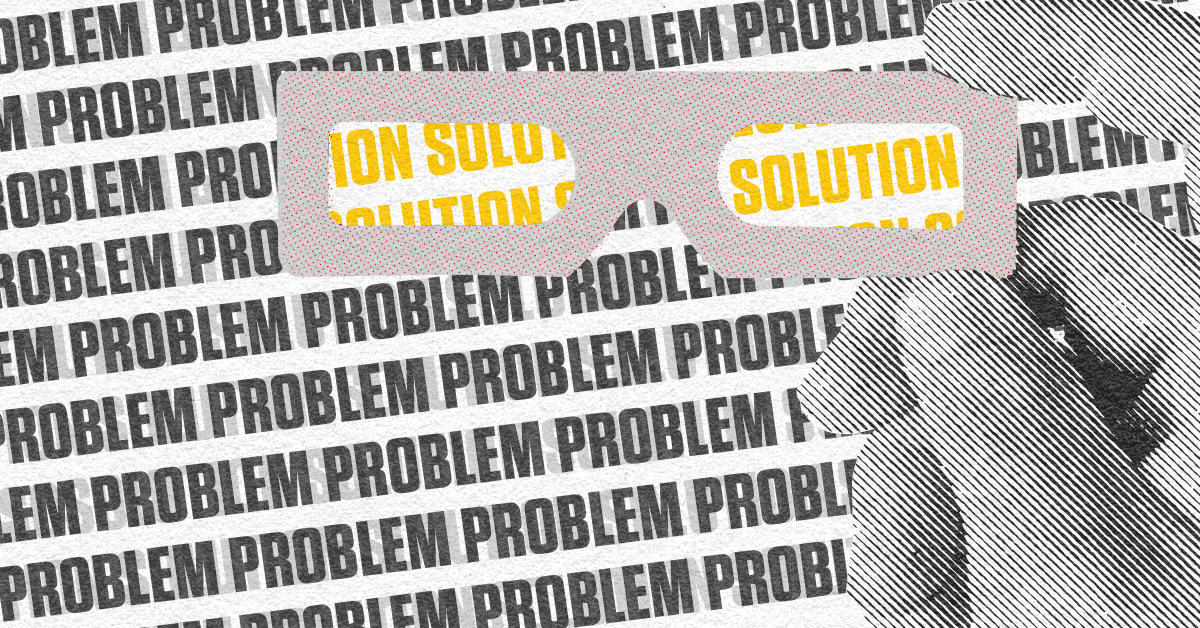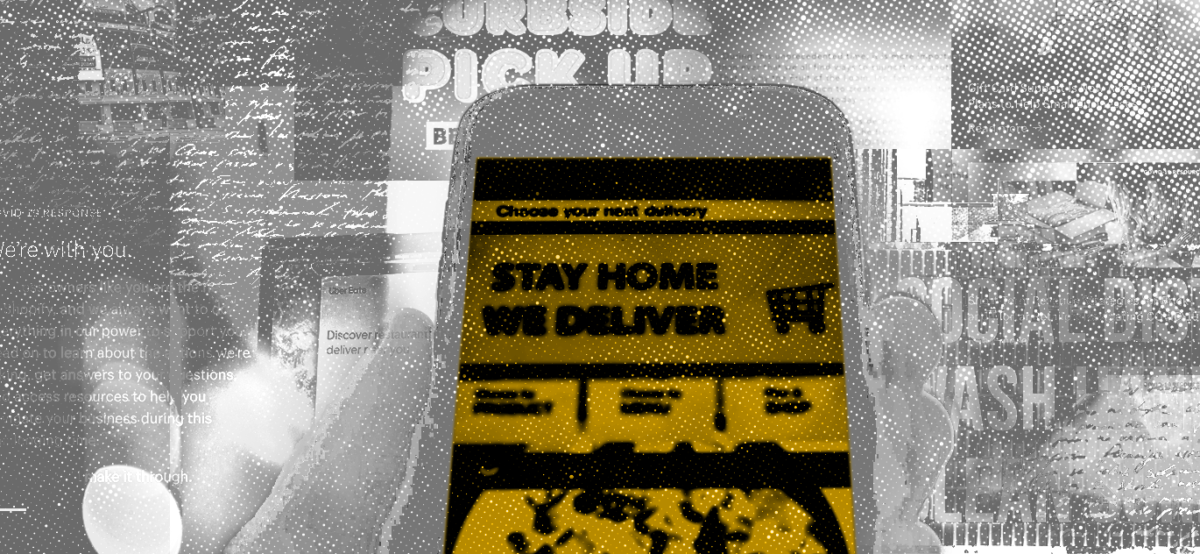In a week like the one we’ve all had, it’s hard to sit down and write a blog with banter and applause. In fact, many of us at Tallwave have had moments of staring at our computer screens in astonishment, disappointment, disapproval, and tears. And while we try to move forward and learn from every experience we face, we know that being sad is more than okay. It’s absolutely crucial to take breaks and allow space to breathe. To question, ponder, and search for, “What next?”
The fact is, something unprecedented happened to all of us – it impacted our friends, families, communities and democracy. But if 2020 taught us anything, it’s that we can not stop trying to be the positive change. We can’t let divisiveness, ugliness, or hate win. We must support one another with empathy, put our fellow neighbors and citizens first, and evaluate the role we play and want to play in our ever-evolving world.
In honor of looking for the helpers – in this case, the people and brands who are doing some good – here are the biggest business, tech and data developments that occurred this past week and will most certainly impact how we design and deliver the customer experiences of tomorrow.
If we put humans first and work together to create positive change, we can and will prevail.
Bringg & Uber Announce Partnership to Enhance Delivery Capabilities For All
Shopping has changed immensely since the onset of COVID-19, and so have business demands on retail delivery.
Well, to answer the troubles and tribulations felt by many business owners who strive to deliver exceptional customer experience – which involves availability of delivery providers and proper operational engineering of delivery workflows and driver engagement (ahem, because employee experience impacts customer experience) – Bringg (a leading delivery and fulfillment cloud provider) and Uber announced their plans to join forces for one common good.
“The world is rapidly changing, and retailers need to adapt to meet customers where they are,” said Niko Avrutov, VP of Alliances at Bringg. “Our partnership with Uber provides retailers with more flexibility in the delivery cycle, not only ensuring that our customers get their orders when and where they want, but enables them to do so without compromising quality or profitability in the delivery cycle, which is key to an excellent customer experience and maintaining a healthy business.”
But the partnership isn’t only beneficial for the delivery cloud provider; it will enable Uber to expand its services into the retailer space, as well – and fast.
“The partnership between Bringg and Uber is neat,” Tallwave’s Senior Product Designer Alyssa Hayes thinks. “It demonstrates how two different companies can find opportunities and adapt their services to suit this rapidly changing landscape. By leveraging and combining their respective strengths and products offerings, they’ll be able to provide a better experience for their own customers (businesses), which in turn enables those businesses to confront the challenges of access and fulfillment for their customers.”
The partnership is a perfect silver lining result of the new normal we’re all living in.
“By not being able to go into stores as easily, as frequently, or even at all in some cases, our shopping experiences may extend across days and weeks as we now depend on the abilities and bandwidth of couriers to facilitate the hand-off from store to buyer,” explains Alyssa. “For some, this is simply a minor inconvenience of being forced to delay gratification between purchase and use. For others, it has caused significant issues in not being able to access essential and necessary items for daily living. And for businesses, this has created friction in the ability to maintain sales and get products delivered quickly and easily.”
"They'll be able to provide a better experience for their own customers (businesses), which in turn enables those businesses to confront the challenges of access and fulfillment for their customers."
The Bringg-Uber partnership will help to resolve this. According to Alyssa, strategic partnerships like this – ones that create stronger, more efficient and more flexible delivery networks – will help people get what they need, when they need it. “Think prescriptions, medical supplies, or food for those without access to their own transportation,” she says.
And it may even make way for people to support local businesses more. “I would love to see this as a way to potentially help people shop smaller and sustainable businesses in their community rather than leaning on Amazon as the go-to for (literally) everything.”
Alexa, you can take a break. We’ll order our goods elsewhere.
Also read: Solving For the Lack of Diversity in CX
Connection Still Matters. New Survey Reveals 46% of Consumers Still Want to Shop In Store
The days of in-person shopping aren’t over – or at least, consumers don’t want them to be. A new survey conducted by Raydiant found that 46% of respondents, when given a choice, would choose to shop in-store rather than online. Now, while this figure is down 9% compared to 2020, it’s vastly better than many businesses were expecting.
The most crucial takeaway from the survey, though, was the emphasis on a store’s in-person experience and its impact on a customer’s likelihood to return. Sixty percent of respondents said they’d abandon a retailer after a poor offline shopping experience. Conversely, 65% said they’d likely support a business both online and in-person after a good in-store experience.
What makes a good experience, you ask? The top five factors contributors were reportedly quality of service, variety of products, store layout and organization, health and safety procedures, and checkout efficiency.
These survey results weren’t a huge surprise to Tallwave Chief Operations Officer Ed Borromeo. “In-store and in-person experiences are still very important to overall brand experience,” he says. “While we’ll continue to see this shift to digital, I’m witnessing some of the most progressive brands – even those that started as digital-only – strongly consider and implement useful and valuable in-person experiences. In the post-pandemic world, those who can integrate health & safety into seamless in-store experience will have an advantage.”
The question is, as businesses attempt to return to some version of normalcy in 2021, how will they ensure the trust and safety of all shoppers who wander in, whether they’ve been vaccinated or not? Be it a phased approach, mask mandates regardless of vaccination, continued limited capacities or badges that signify vaccination, we’ll have to see. One thing is for sure: It’s no longer “Shop ‘til you drop!” It’s now “Shop ‘til you feel your health is at risk.”
"In the post-pandemic world, those who can integrate health & safety into seamless in-store experience will have an advantage.”
Scotiabank & Cineplex Join Forces to Enhance Loyalty Programs & Serve Customers Right
In more partnership news from overseas, Scotiabank and Cineplex announced their plans to collaborate on an improved loyalty program that will deliver more desirable benefits and rewards for users. Not only will points be redeemable for entertainment and dining, but members will soon be able to use them to purchase brand-name merchandise, book flexible travel, or pay off credit bills.
This is big news because loyalty programs are where it’s at in 2021.
“Consumers are increasingly looking for ways to leverage their interactions with brands,” says Tallwave’s Senior Consultant Jason Edwards. “As price variations in many markets like entertainment, travel, and retail becomes tighter, brands are looking for ways to further engage with their customers. Loyalty programs have the ability to provide a boost.”
But, there’s a catch.
“The structure of the rewards plays a very important role in the success of a program. The opportunities to ‘earn’ rewards along with the ability to ‘burn’ (redeem) earnings are key elements to creating the right loyalty program,” explains Jason.
While Scotiabank and Cineplex are certainly on a fruitful, consumer-centric path, there’s a new key element Jason says they – and any consumer brands – may want to consider incorporating into the near future.
"Consumers are increasingly looking for ways to leverage their interactions with brands"
“Now loyalty programs need to be more than simple ‘earn & burn’ opportunities for customers. There is a limit to the impact loyalty programs generally provide. In part, since customers must spend money to earn rewards, these kinds of programs often don’t provide value to occasional customers or those with lower spending habits.”
What does that mean brands that are wanting to improve and innovate their loyalty programs should do? Strategize through a holistic lens.
“Consider providing rewards earlier in the customer’s engagement,” Jason suggests. “This could include non-monetary benefits of programs, or by lowering the threshold for reward accumulation. Another way to further empower loyalty programs is to find ways to make the customer feel a part of a group. American Express’s tagline ‘Membership has its privileges’ is a good example of the thinking that brands should be invoking.”
Community is everything. Serving humans should be prioritized above all else. Place these values at the forefront of your strategic planning and consumers will celebrate you with their own rewards – satisfaction, loyalty, and long-term support. And, if you ever need a helping hand, Tallwave is here for you.

